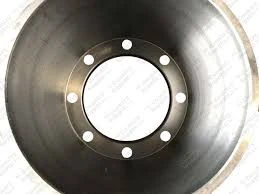
-
 Afrikaans
Afrikaans -
 Albanian
Albanian -
 Amharic
Amharic -
 Arabic
Arabic -
 Armenian
Armenian -
 Azerbaijani
Azerbaijani -
 Basque
Basque -
 Belarusian
Belarusian -
 Bengali
Bengali -
 Bosnian
Bosnian -
 Bulgarian
Bulgarian -
 Catalan
Catalan -
 Cebuano
Cebuano -
 Corsican
Corsican -
 Croatian
Croatian -
 Czech
Czech -
 Danish
Danish -
 Dutch
Dutch -
 English
English -
 Esperanto
Esperanto -
 Estonian
Estonian -
 Finnish
Finnish -
 French
French -
 Frisian
Frisian -
 Galician
Galician -
 Georgian
Georgian -
 German
German -
 Greek
Greek -
 Gujarati
Gujarati -
 Haitian Creole
Haitian Creole -
 hausa
hausa -
 hawaiian
hawaiian -
 Hebrew
Hebrew -
 Hindi
Hindi -
 Miao
Miao -
 Hungarian
Hungarian -
 Icelandic
Icelandic -
 igbo
igbo -
 Indonesian
Indonesian -
 irish
irish -
 Italian
Italian -
 Japanese
Japanese -
 Javanese
Javanese -
 Kannada
Kannada -
 kazakh
kazakh -
 Khmer
Khmer -
 Rwandese
Rwandese -
 Korean
Korean -
 Kurdish
Kurdish -
 Kyrgyz
Kyrgyz -
 Lao
Lao -
 Latin
Latin -
 Latvian
Latvian -
 Lithuanian
Lithuanian -
 Luxembourgish
Luxembourgish -
 Macedonian
Macedonian -
 Malgashi
Malgashi -
 Malay
Malay -
 Malayalam
Malayalam -
 Maltese
Maltese -
 Maori
Maori -
 Marathi
Marathi -
 Mongolian
Mongolian -
 Myanmar
Myanmar -
 Nepali
Nepali -
 Norwegian
Norwegian -
 Norwegian
Norwegian -
 Occitan
Occitan -
 Pashto
Pashto -
 Persian
Persian -
 Polish
Polish -
 Portuguese
Portuguese -
 Punjabi
Punjabi -
 Romanian
Romanian -
 Russian
Russian -
 Samoan
Samoan -
 Scottish Gaelic
Scottish Gaelic -
 Serbian
Serbian -
 Sesotho
Sesotho -
 Shona
Shona -
 Sindhi
Sindhi -
 Sinhala
Sinhala -
 Slovak
Slovak -
 Slovenian
Slovenian -
 Somali
Somali -
 Spanish
Spanish -
 Sundanese
Sundanese -
 Swahili
Swahili -
 Swedish
Swedish -
 Tagalog
Tagalog -
 Tajik
Tajik -
 Tamil
Tamil -
 Tatar
Tatar -
 Telugu
Telugu -
 Thai
Thai -
 Turkish
Turkish -
 Turkmen
Turkmen -
 Ukrainian
Ukrainian -
 Urdu
Urdu -
 Uighur
Uighur -
 Uzbek
Uzbek -
 Vietnamese
Vietnamese -
 Welsh
Welsh -
 Bantu
Bantu -
 Yiddish
Yiddish -
 Yoruba
Yoruba -
 Zulu
Zulu
Understanding the Function and Components of Rear Drum Brake Systems
Understanding Rear Drum Brakes Mechanism, Benefits, and Maintenance
Rear drum brakes are a vital component of many vehicles, particularly older models and certain lighter vehicles. While disc brakes are often praised for their superior stopping power and performance, drum brakes play an essential role in the overall braking system, especially for the rear wheels. This article delves into how rear drum brakes work, their advantages and disadvantages, and essential maintenance tips.
Mechanism of Rear Drum Brakes
The basic structure of a rear drum brake consists of a drum, shoes, and a backing plate. When the driver presses the brake pedal, hydraulic fluid is sent to the wheel cylinder, which pushes the brake shoes outward against the inside surface of the brake drum. The friction generated between the brake shoes and the drum slows down the vehicle. Unlike disc brakes, which use a rotor and caliper system, drum brakes enclose the braking mechanism within a drum, providing a compact design.
The design of the drum brake is notable for its self-energizing capability. When the drum rotates, the leading shoe makes contact first, generating a force that helps push the shoe against the drum, increasing the braking efficiency without requiring additional effort from the driver. This feature is one reason why rear drum brakes are still in use today.
Advantages of Rear Drum Brakes
1. Cost-Effectiveness Rear drum brakes are generally less expensive to manufacture and install compared to disc brakes. This makes them a popular choice for budget-friendly vehicles and for use in low-performance applications.
2. Durability The enclosed design of drum brakes protects the braking components from dirt, debris, and moisture, allowing them to perform well in various environmental conditions.
3. Less Weight Drum brakes typically weigh less than their disc counterparts, which can contribute to overall vehicle efficiency, especially in smaller vehicles.
rear drum brake

Disadvantages of Rear Drum Brakes
Despite their advantages, rear drum brakes have some disadvantages compared to disc brakes. They tend to dissipate heat less effectively, which can lead to brake fade during extended use. This makes them less suitable for high-performance cars or vehicles that undergo frequent heavy braking. Moreover, drum brakes can be more challenging to service than disc brakes, as the internal components are less accessible.
Maintenance and Care
Regular maintenance of rear drum brakes is crucial to ensure their longevity and performance. Here are some tips for care
1. Inspect Regularly Periodically check the brake shoes for wear and replace them if they are too thin. Inspect the drums for grooves and scoring, which can affect braking efficiency.
2. Keep Clean Ensure that the drum and brake shoes are free from any oil or grease, as contamination can drastically reduce braking performance.
3. Adjustments Some drum brake systems require regular adjustments to maintain optimal performance. Ensure that this is performed either by yourself or by a professional mechanic.
4. Listen for Noises Be attentive to any unusual noises, such as grinding or squeaking, when applying brakes as these can be signs of wear or failure.
In conclusion, rear drum brakes, while less common in modern vehicles, still serve an important purpose in certain applications. Understanding their operation, benefits, and maintenance needs can help vehicle owners make informed decisions and ensure their braking system remains safe and effective. Whether in classic cars or lighter vehicles, rear drum brakes remain a reliable option when cared for properly.
-
Rear Drum Brakes Maintenance TipsNewsAug.04,2025
-
Key Components Affecting Brake Drum FunctionNewsAug.04,2025
-
Important Inspection for Truck Drum BrakeNewsAug.04,2025
-
How to Prepare for Changing Rear Drum BrakesNewsAug.04,2025
-
Essential Tools for Cleaning Drum Brakes ProperlyNewsAug.04,2025
-
Brake Drum Function GuideNewsAug.04,2025
-
Safety Features of Red Brake DrumsNewsAug.01,2025
